Hario V60 vs Kalita Wave. We explore these two popular pour-over methods.
Are you looking to improve your brewing skills? If so, you must consider mastering the Hario V60 and Kalita Wave brewers.
In the following sections, we will delve deeper into the differences between these two brewing methods and help you determine the best fit for your coffee preferences.
Please note: This article contains affiliate links, meaning I may earn a commission if you make a purchase by clicking a link. Of course, this comes at no extra cost to you and helps me keep offering readers solid information.
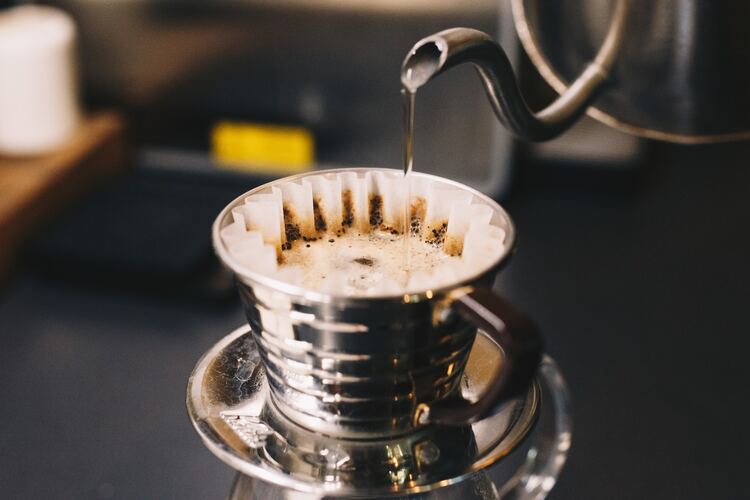
Hario V60 vs Kalita Wave
Before contrasting these two brewers, let’s understand what they are.
Hario V60
Hario, a Japanese company known for its range of high-quality glassware, introduced the V60 in the early 2000s. The V60 gets its name from the 60-degree angle of the cone-shaped brewer. This design, paired with its spiral ribs, allows for an efficient and even extraction of coffee.
This cone-shaped brewer is made of ceramic, glass, or plastic. It has spiral ridges inside the cone that help guide the water through the coffee grounds. The coffee drips through a single hole at the bottom of the cone into a cup.
Kalita Wave
The Japanese company Kalita Co., Ltd. developed the Kalita Wave brewer in 2011.
The brewer consists of a conical dripper with a flat bottom with three small holes. The flat bottom and the three holes allow for even extraction and a consistent water flow through the coffee bed. The Wave brewer also features ridges or “waves” along the inner wall of the dripper, which helps to create space between the filter and the dripper, allowing for better air circulation and preventing the filter from sticking to the sides.
Both the Hario V60 and Kalita Wave require a pour-over technique, which involves pouring hot water over the coffee grounds in a slow, steady stream. This allows the coffee to be extracted evenly and produces a clean, bright cup of coffee.
The Hario V60 produces a lighter, more delicate cup of coffee, while the Kalita Wave is known for having a fuller-bodied cup with more pronounced flavors.
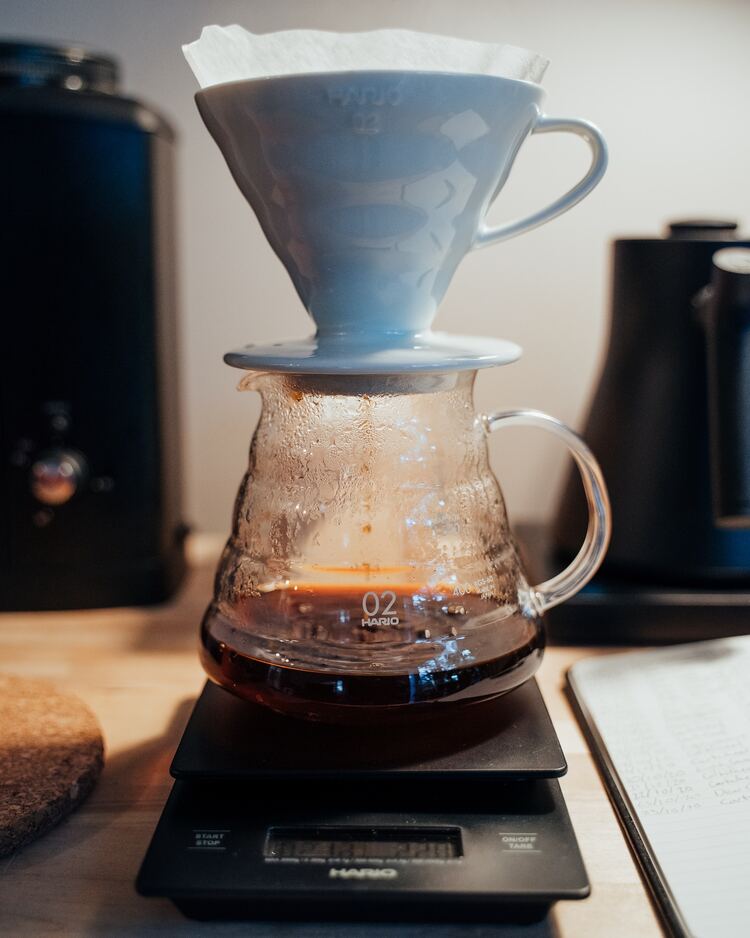
Hario V60 vs Kalita Wave: Extraction and Flavor
Extraction
When it comes to extraction, both the Hario V60 and Kalita Wave are capable of producing excellent cups of coffee. However, the brewing process differs slightly between the two methods.
The Hario V60 requires a bit more attention to detail during the brewing process. It is important to pour the water in a slow, steady stream and maintain a 60-degree angle to ensure even extraction. Additionally, the V60 has a single large hole at the bottom, which allows for a more consistent flow rate and faster extraction.
On the other hand, the Kalita Wave has three small holes at the bottom, making it easier to achieve a controlled water flow and balanced extraction, even for those new to pour-over brewing.
Flavor
Flavor is subjective and can vary depending on the type of beans used, roast level, and brewing technique. However, some general differences in flavor can be attributed to the brewing methods of the Hario V60 and Kalita Wave.
The Hario V60 produces a lighter, brighter cup of coffee with more pronounced acidity. This can be ideal for those who enjoy fruity, floral, or tea-like flavors in their coffee.
On the other hand, the Kalita Wave often produces a fuller-bodied cup with a more balanced flavor profile. This can be a good option for those who prefer a more traditional coffee flavor with notes of chocolate, caramel, or nuts.
To summarize, both the Hario V60 and Kalita Wave can produce excellent cups of coffee with unique flavor profiles. The Hario V60 requires a bit more attention to detail during the brewing process, while the Kalita Wave can be a bit more forgiving.
Materials Used
When choosing between the Hario V60 and the Kalita Wave, one of the factors you should consider is the materials used to make them. Here are the different materials used in making these coffee drippers:
Glass
The Hario V60 and Kalita Wave are available in glass versions. Glass is a great material for coffee drippers because it doesn’t retain any flavors or odors, so that you can enjoy a pure and clean cup of coffee. It’s also easy to clean and looks elegant on your kitchen counter.
Ceramic
Both the Hario V60 and Kalita Wave are available in ceramic versions. Ceramic is a durable, heat-resistant material. It is a nice choice for coffee drippers because it helps maintain a consistent temperature during brewing. It’s also easy to clean and doesn’t absorb any flavors or odors.
Stainless Steel
Stainless steel is a popular material for coffee drippers because it’s durable, easy to clean, and doesn’t affect the taste of the coffee. The Hario V60 and Kalita Wave are available in stainless steel versions. This is a no-brainer if you’re looking for a long-lasting and sturdy coffee dripper.
Plastic
The Hario V60 is available in a plastic version. Plastic is lightweight and shatterproof. It is a good choice if you’re looking for a portable coffee dripper that you can take with you on camping trips or to the office. However, some people prefer glass or ceramic because they believe that plastic can affect the taste of their coffee.
To summarize, the materials used in making coffee drippers play an important role in the taste and quality of your coffee.
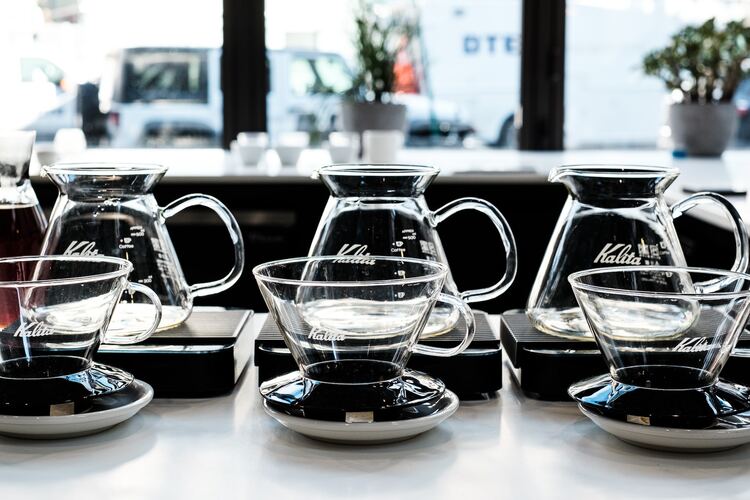
Design and Ease of Use
Dripper
The Hario V60 and Kalita Wave have a unique design distinguishing them from other coffee drippers. The Hario V60 has a cone shape with spiral ridges on the inside, while the Kalita Wave has a flat bottom with three small holes.
Both drippers come in various materials (as discussed in the previous section), sizes, and colors, allowing you to choose the one that suits your preference.
Portability
If you’re looking for a dripper that’s very portable and lightweight, the Hario V60 is the better option. It’s smaller and more compact than the Kalita Wave, making it easier to pack in your bag when you’re on the go.
The Hario V60 comes in a plastic version, contributing to its portability factor. To clarify, Kalita has plastic dripping brewers, but they are not part of the Wave line (or I have not found them).
Ease of Use
Both drippers are relatively easy to use, but the Hario V60 takes a bit more skill and practice to get right. The spiral ridges inside the cone require you to pour the water in a circular motion to ensure an even extraction.
On the other hand, the Kalita Wave has a flat bottom with three small holes that regulate the water flow, making it easier to use for beginners. The Kalita Wave’s small handle makes it easier to hold and pour with precision.
To summarize, both the Hario V60 and Kalita Wave have elegant designs that are stylish and functional. The Hario V60 is more portable and lightweight, while the Kalita Wave is easier to use for beginners. Choose the one that suits your needs and preferences.
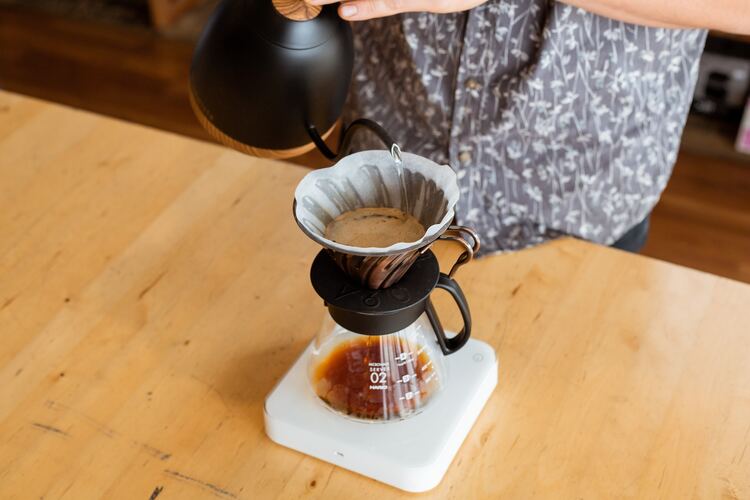
Hario V60 vs Kalita Wave: Brewing Techniques
Pouring Technique
The pouring technique is crucial to achieve a balanced extraction. For both brewers, start by pouring water slowly in a circular motion, ensuring to wet all the coffee grounds. Then, continue pouring in a steady stream, maintaining a consistent pace until you reach the desired water volume. Avoid pouring too fast or slow, as it can affect the extraction.
Brew Time
The brew time depends on the amount of coffee and water used and the desired strength. Typically, 2-3 minutes of brew is recommended for Hario V60 and Kalita Wave. However, you can adjust the brew time by experimenting with different ratios and grind sizes.
Water Temperature
The water temperature is also crucial for a good cup of coffee. The water temperature should ideally be between 195-205°F (90-96°C). If the water is too hot, it can over-extract the coffee, resulting in a bitter taste. If the water is too cold, it can under-extract the coffee, resulting in a weak and sour taste.
Grind Size
The grind size is one of the most critical factors affecting extraction. For Hario V60, a medium-fine grind is recommended, while for Kalita Wave, a medium-coarse grind is recommended. However, the grind size also depends on the type of coffee beans and the desired strength. A finer grind size will result in a stronger brew, while a coarser grind size will result in a weaker brew.
Filter Types and Their Impact
When it comes to brewing coffee, the type of filter you use can significantly impact the taste and aroma of your coffee.
Paper Filters
Paper filters are the most common type of filter used in coffee brewing. They are inexpensive, easy to use, and disposable. Paper filters come in various sizes and shapes to fit different brewing devices, including the Hario V60 and Kalita Wave.
One of the benefits of using a paper filter is that it removes most of the coffee oils and sediment, resulting in a clean and bright cup of coffee. However, some coffee enthusiasts argue that paper filters can also remove flavor and aroma compounds, resulting in a less complex cup of coffee.
Metal Filters
Metal or mesh filters are reusable and more eco-friendly than paper filters. They are typically made of stainless steel or gold-plated and can last for years with proper care.
One of the benefits of using a metal filter is that it allows more of the coffee oils and sediment to pass through, resulting in a richer and fuller-bodied cup of coffee. However, this can lead to a slightly bitter or gritty taste if not brewed properly.
Metal filters can be acquired for both the Hario V60 and Kalita Wave.
Special Filters
Special filters are also available designed to enhance specific aspects of the brewing process. For example, the Kalita Wave filter has a unique wave shape that promotes even extraction and a balanced flavor profile.
Other special filters include cloth filters, which can provide a smoother and more full-bodied cup of coffee, and ceramic filters, which can help retain heat and provide a more consistent brewing temperature.
To summarize, the type of filter you choose can significantly impact the taste and aroma of your coffee. Paper filters are a popular and affordable option that provides a clean and bright cup of coffee, while metal filters offer a richer and fuller-bodied cup. Special filters can also provide unique benefits depending on your brewing preferences.

Hario V60 vs Kalita Wave: Price and Value for Money
When choosing between Hario V60 and Kalita Wave, price and value for money are essential factors to consider. Both coffee makers are affordable, but they differ in terms of price and value for money.
The Hario V60 is generally cheaper than the Kalita Wave, with prices ranging from $15 to $30 depending on the size and material. On the other hand, the Kalita Wave is slightly more expensive, with prices ranging from $20 to $50 depending on the size and material.
While the Hario V60 is cheaper, it does not compromise on quality. It is made of high-quality and durable materials, making it an excellent value for money. On the other hand, the Kalita Wave is also made of high-quality materials and is equally durable, but it is slightly more expensive.
In terms of value for money, both coffee makers offer great value. The Hario V60 is a wonderful choice for those on a tight budget who still want a high-quality coffee maker. The Kalita Wave, on the other hand, is a great for those who are willing to spend a little more on a coffee maker that is slightly more advanced and offers more control over the brewing process.
Here are our top Hario V60 recommendations:
Hario Pour Over Coffee Starter Set

Hario Pour Over Coffee Starter Set

Hario V60 Pour Over Set with Ceramic Dripper

Here are our top Kalita Wave recommendations:

2001 Kalita 102 Ceramic Dripper Coffee Dipper

Kalita Wave Dripper 155 Series Glass

Frequently Asked Questions
Which pour-over coffee maker is better, Hario V60 or Kalita Wave?
Hario V60 and Kalita Wave are excellent pour-over coffee makers, and which is better depends on your preferences. If you prefer a lighter and more delicate cup of coffee, Hario V60 might be your better choice. On the other hand, if you prefer a more full-bodied and balanced cup of coffee, Kalita Wave might be the better choice.
What are the differences between Hario V60 and Kalita Wave?
The main difference between Hario V60 and Kalita Wave is the shape of their filters. Hario V60 has a cone-shaped filter, while Kalita Wave has a flat-bottomed filter. This difference affects the flow rate of water through the coffee grounds, which can affect the taste of the coffee. Additionally, Hario V60 requires a more precise pour technique, while Kalita Wave is more forgiving.
Can you compare Hario V60 and Kalita Wave in terms of brewing quality?
Both Hario V60 and Kalita Wave can produce high-quality coffee, but the brewing quality depends on the user’s technique and the quality of the coffee beans. With proper technique and high-quality beans, both pour-over coffee makers can produce excellent coffee.
Which one is easier to use, Hario V60 or Kalita Wave?
Kalita Wave is generally considered easier to use because it is more forgiving of pour technique and has a more consistent flow rate. Hario V60 requires a more precise pour technique and can be more challenging for beginners.
What are the pros and cons of Hario V60 and Kalita Wave?
Hario V60 pros: produces a lighter and more delicate cup of coffee, allows for more control over the brewing process.
Hario V60 cons: requires a more precise pour technique and can be more difficult to use for beginners.
Kalita Wave pros: produces a more full-bodied and balanced cup of coffee, more forgiving of pour technique, and has a more consistent flow rate.
Kalita Wave cons: can be more difficult to clean, requires a specific type of filter.
Which pour-over coffee maker is more suitable for beginners, Hario V60 or Kalita Wave?
Kalita Wave is generally considered more suitable for beginners because it is more forgiving of pour technique and has a more consistent flow rate. However, with practice, Hario V60 can also be used effectively by beginners.
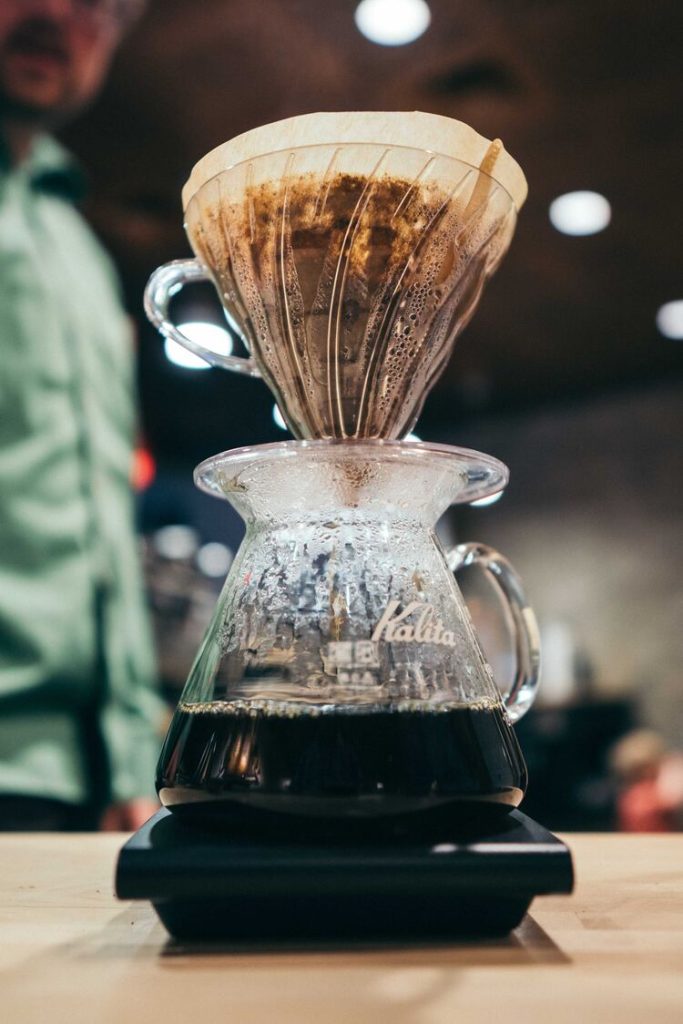
It has been fascinating to learn how these two brewers, developed by Japanese companies in recent years, have gained ground in the coffee business. I hope you have enjoyed the article and learned something new!
Hario V60 vs Kalita Wave, which coffee brewer do you prefer?